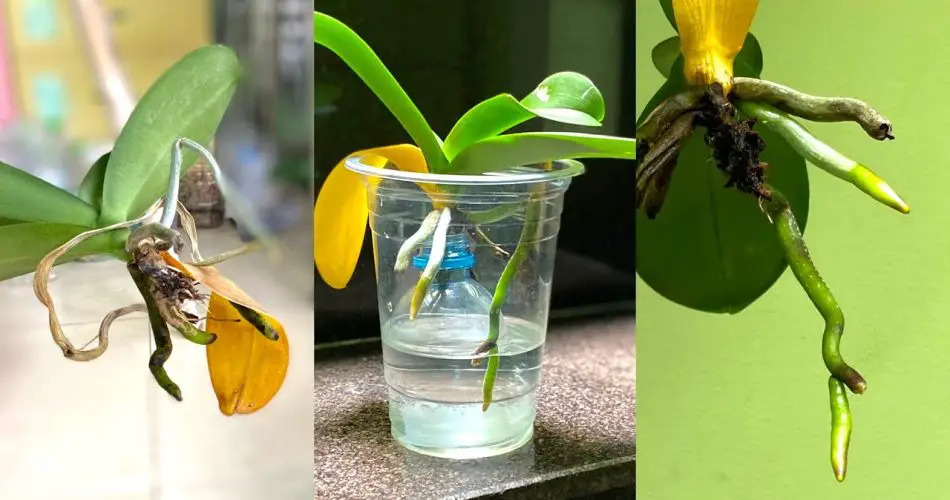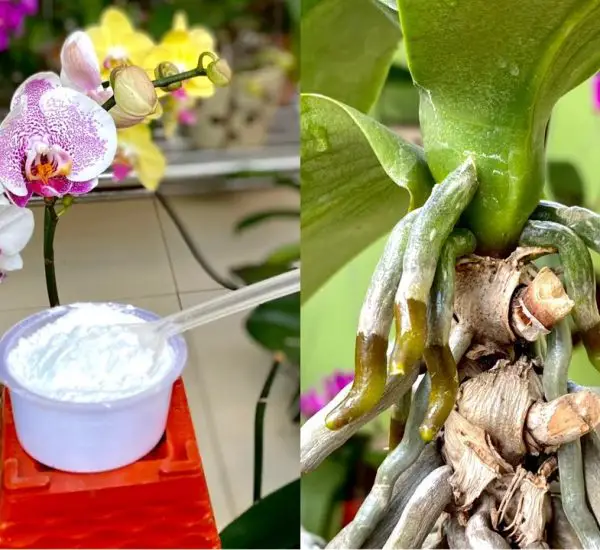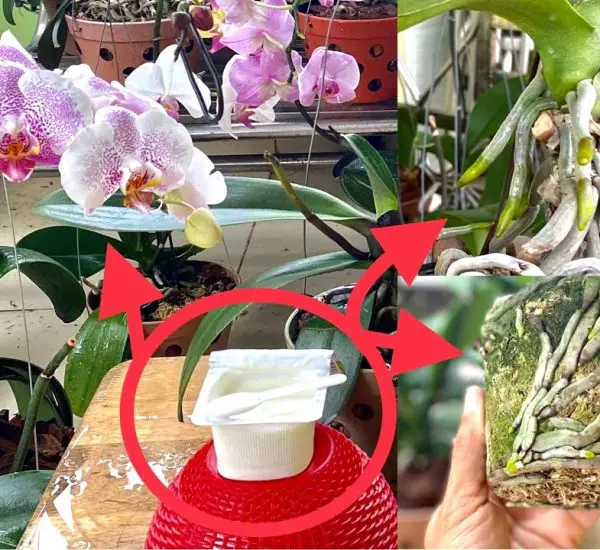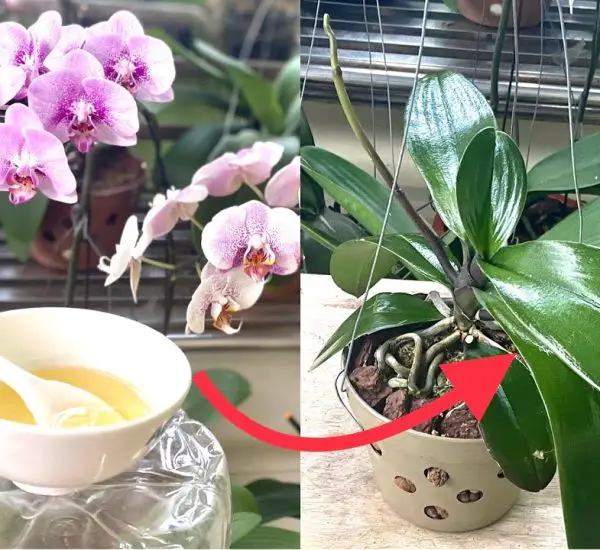Removing Damaged Parts for a Clean Start:
Begin the process of reviving orchids with damaged roots and rotten leaves by meticulously removing the compromised parts. Cut away damaged leaves and roots to eliminate hiding spots for harmful bacteria and fungi. Cleaning the base of the tree is crucial; ensure a thorough removal of any debris or damaged sections. Wash both roots and leaves meticulously to create a clean foundation for the orchid’s recovery.
Secure Fixation with Plastic Bottles:
To provide a stable environment for the orchid during recovery, employ used plastic bottles. Place the orchid in a bottle, using a glass or resin to secure it in position. This setup ensures that only part of the roots is covered, leaving the stump untouched. Adding water to the container helps maintain moisture, and placing the pot in a cool, well-lit area accelerates the recovery process. After 45 days, observe the orchid’s remarkable progress with new, well-developed roots.
Root Recovery in Water Contact:
During the recovery process, adopt a method where only the roots come into contact with water. This technique effectively limits the growth of fungal diseases. While the leaves may turn yellow during this stage due to the lack of nutrition in ordinary tap water, it is a normal part of the recovery process. This water-centric approach proves to be an efficient means of restoring orchids with leaf rot without resorting to medicinal treatments. Ensure regular checks to trim damaged roots and continue the water immersion until the orchid is ready for transplantation.
Transplantation and Continued Vigilance:
As the orchid progresses in recovery, transplant it into a pot with pine bark for sustained growth. This step ensures a healthy and thriving orchid. Place the pot in a cool, well-lit area, letting the base of the plant protrude from the pot. This straightforward and effective approach demonstrates that even without using medications, orchids with leaf rot and root damage can recover and grow quickly. Regularly monitoring the orchid’s progress and taking preventive measures, such as placing the pot in water, contribute to successful orchid care.
By following these practical steps, you can effectively restore orchids, allowing them to develop healthy roots and overcome issues like leaf rot and root damage without the need for medicinal interventions.




